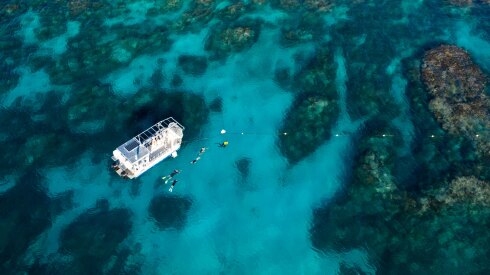Fans of the movie Apocalypse Now probably know it was shot in Baler, some 150 miles northeast of Manila. At the time, locals were already well aware of the area’s killer waves, which caused trouble for the fishermen. But attitudes toward the waves slowly changed, thanks to the film: Residents used the surfboards left behind by the crew to learn to ride them. Surfing culture in the Philippines was born, and the big waves were no longer considered a threat, but rather an opportunity to bring in surfing tourism and events each year from October to February. But Baler has a lot to offer for the non-surfer, too, even if you just sit on the beach and watch the ocean. Couples love the long stretch of sand at Sabang, which is perfect for romantic beach walks, and the sunrise here is a must-see. From a historical perspective, Baler is significant because it was the last stand of Spanish forces in the Philippines; the yearlong siege that began in July 1898 is one of the longest in the country’s recorded history. The undermanned Spanish troops, not knowing the war was over, held onto their fortress in the only stone building in the area, the San Luis Obispo de Tolosa church, for 337 days.
More Recommendations
Baler: The Birthplace of Filipino Surfing
Fans of the movie Apocalypse Now probably know it was shot in Baler, some 150 miles northeast of Manila. At the time, locals were already well aware of the area’s killer waves, which caused trouble for the fishermen. But attitudes toward the waves slowly changed, thanks to the film: Residents used the surfboards left behind by the crew to learn to ride them. Surfing culture in the Philippines was born, and the big waves were no longer considered a threat, but rather an opportunity to bring in surfing tourism and events each year from October to February. But Baler has a lot to offer for the non-surfer, too, even if you just sit on the beach and watch the ocean. Couples love the long stretch of sand at Sabang, which is perfect for romantic beach walks, and the sunrise here is a must-see. From a historical perspective, Baler is significant because it was the last stand of Spanish forces in the Philippines; the yearlong siege that began in July 1898 is one of the longest in the country’s recorded history. The undermanned Spanish troops, not knowing the war was over, held onto their fortress in the only stone building in the area, the San Luis Obispo de Tolosa church, for 337 days.







